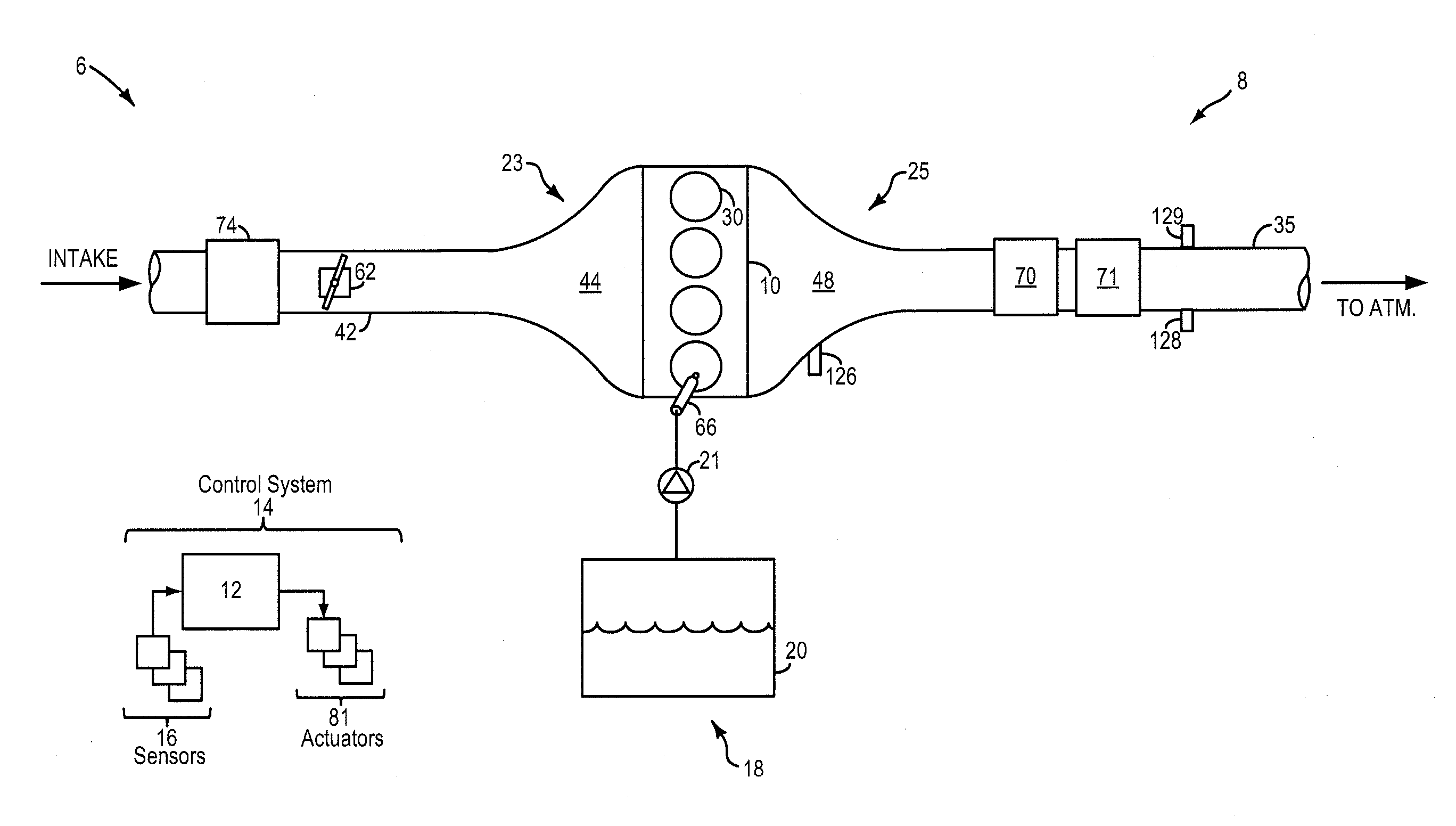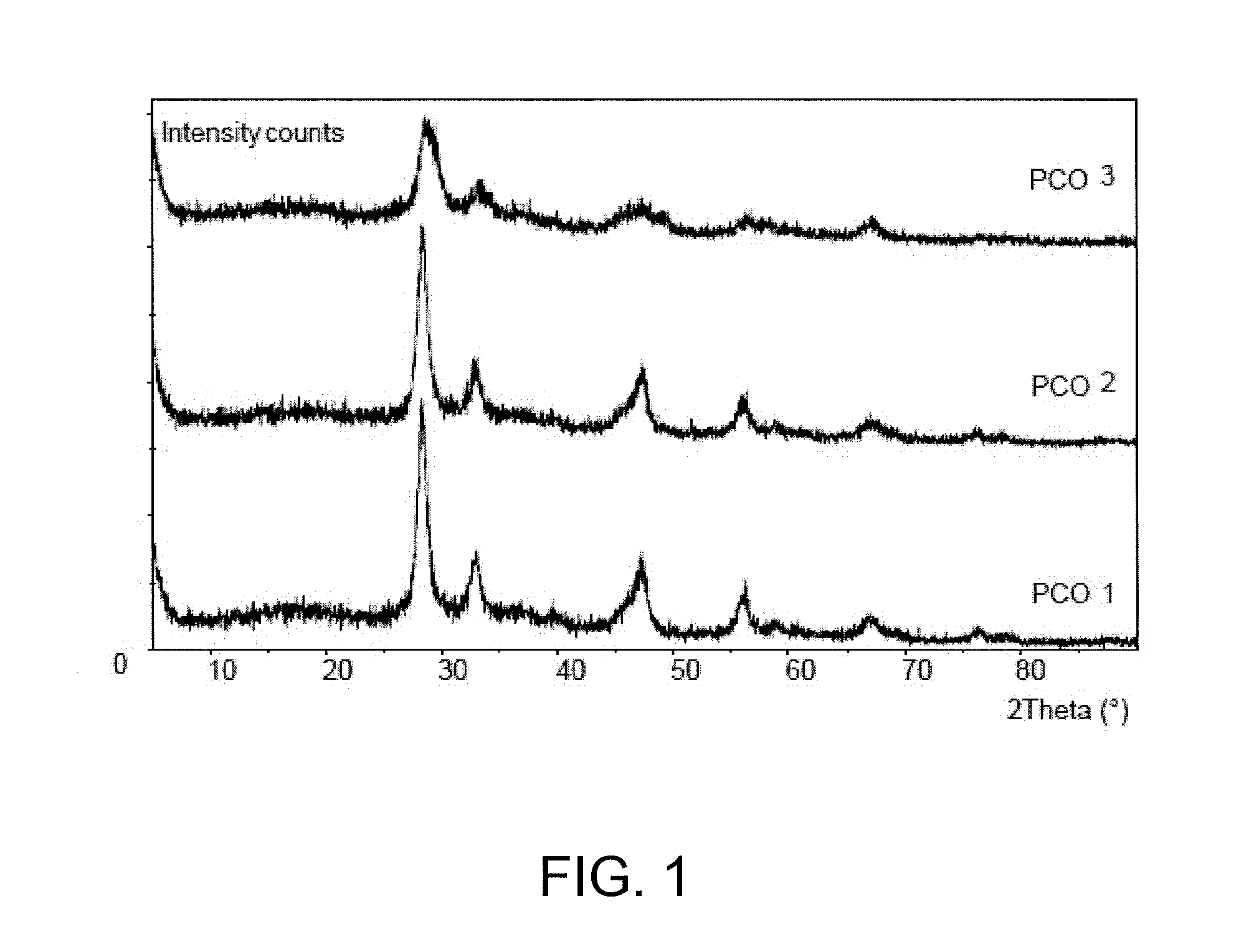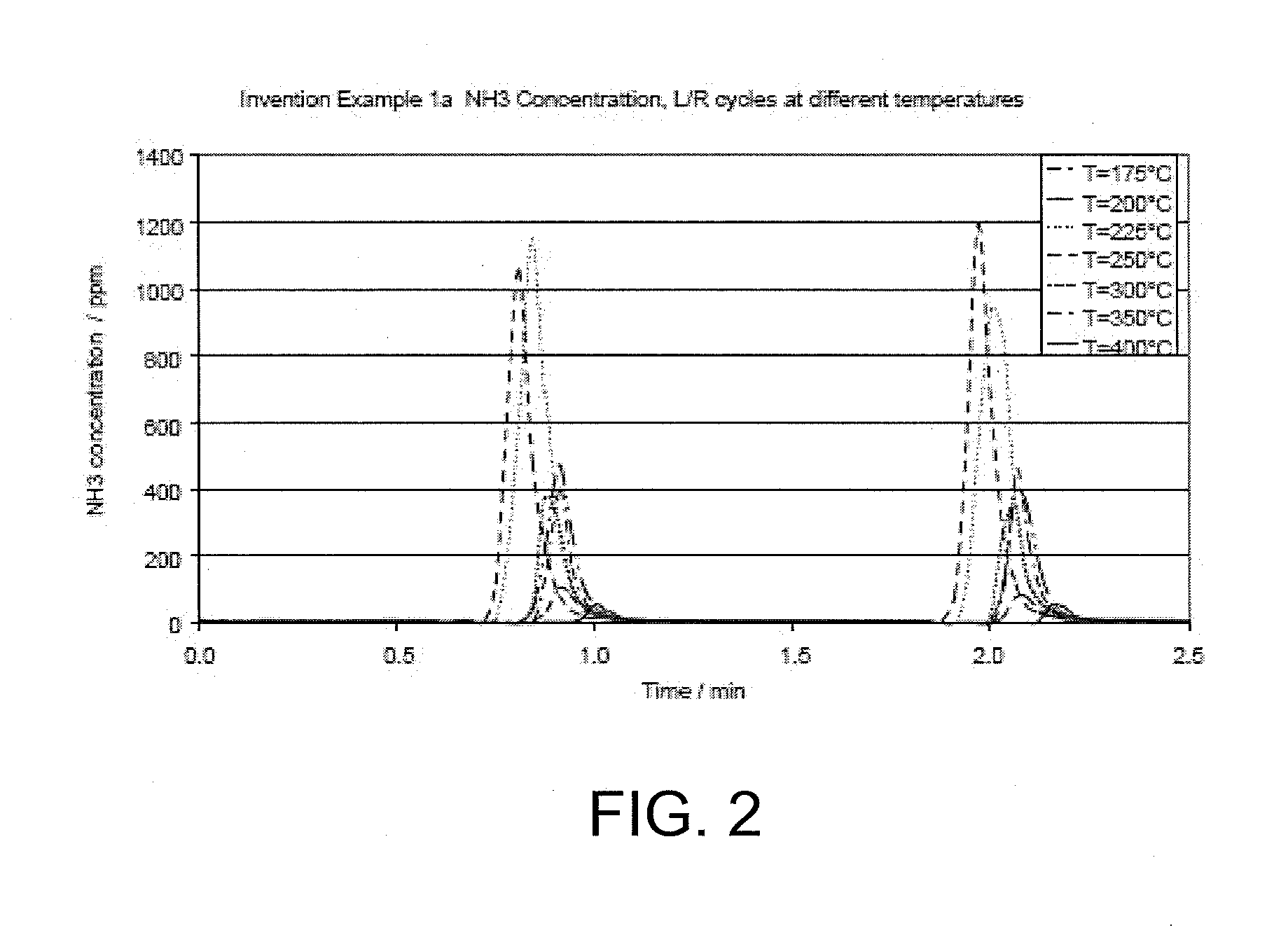Lnt and scr catalysts for combined lnt-scr applications
a technology of catalysts and exhaust gas, applied in physical/chemical process catalysts, metal/metal-oxide/metal-hydroxide catalysts, separation processes, etc., can solve the problems of limited thermal stability, high cost of lnt, and limited application range, so as to reduce stored nox, reduce pgm loading, and narrow temperature window
- Summary
- Abstract
- Description
- Claims
- Application Information
AI Technical Summary
Benefits of technology
Problems solved by technology
Method used
Image
Examples
example 1a
Invention—Pt—Pd—Rh / Ca—La—Ce Mixed Oxide
[0066]0.41 g of lanthanum nitrate La (NO3)3.6H2O, 0.012 g of calcium nitrate Ca (NO3)2. 4H2O, 0.44 g of cerium (III) nitrate Ce (NO3)3.6H2O and 0.90 g of urea were dissolved in 2.7 ml of distilled water and the core sample was then impregnated with this solution and dried at 88° C. overnight and finally dried at 100° C. and calcined at 900° C. for 2 hours to form La—Ca—Ce mixed oxide on the surface of alumina-washcoated cordierite.
[0067]The core sample was further treated with a solution containing 0.23 g of tetra-amineplatinum (II) hydroxide solution (9.09 wt. % Pt), 0.22 g of tetra-amminepalladium nitrate solution (4.6 wt. % Pd), 27 mg of Rh nitrate (12.9% Rh), 0.38 g of citric acid and 0.90 g of urea and 2.25 g of distilled water. PGM loading was the following—Pt 30 g / ft3, Pd 15 g / ft3, Rh 5 g / ft3. The core was further dried at 88° C. overnight and finally dried at 100° C. and finally calcined at 600° C. for 2 hours.
example 1b
Invention—Pt—Pd—Rh / Sr—La—Ce Mixed Oxide
[0068]The method of preparation and chemicals used were the same as described in Example la, but 0.011 g of strontium nitrate Sr(NO3)2 was used instead of calcium nitrate. Example 1c, Invention —Pt—Pd—Rh / Ca—La—Ce—Zr mixed oxide:
[0069]The method of preparation was the same as it described in Example 1a, but 0.22 g of cerium nitrate and 0.34 g of zirconyl nitrate, 35% solution in diluted nitric acid was used instead of 0.44 g of cerium nitrate as in Example 1a.
example 1d
Invention—Pt—Pd / Ca—La—Ce Mixed Oxide (Pt and Pd Higher Loading, Rh-free)
[0070]The method of preparation and chemicals were the same as described for Example 1a, but 0.46 g of tetra-ammineplatinum (II) hydroxide solution (9.09 wt. % Pt), and 0.45 g of tetra-amminepalladium (II) ammonium nitrate (4.6 wt. % Pd) were used (double amount), the amount of distilled water was adjusted to 1.75 ml. PGM loading was the following: Pt 60 g / ft3, Pd 30 g / ft3, Rh 0 g / ft3.
PUM
| Property | Measurement | Unit |
|---|---|---|
| Temperature | aaaaa | aaaaa |
| Temperature | aaaaa | aaaaa |
| Temperature | aaaaa | aaaaa |
Abstract
Description
Claims
Application Information
 Login to View More
Login to View More - R&D
- Intellectual Property
- Life Sciences
- Materials
- Tech Scout
- Unparalleled Data Quality
- Higher Quality Content
- 60% Fewer Hallucinations
Browse by: Latest US Patents, China's latest patents, Technical Efficacy Thesaurus, Application Domain, Technology Topic, Popular Technical Reports.
© 2025 PatSnap. All rights reserved.Legal|Privacy policy|Modern Slavery Act Transparency Statement|Sitemap|About US| Contact US: help@patsnap.com



